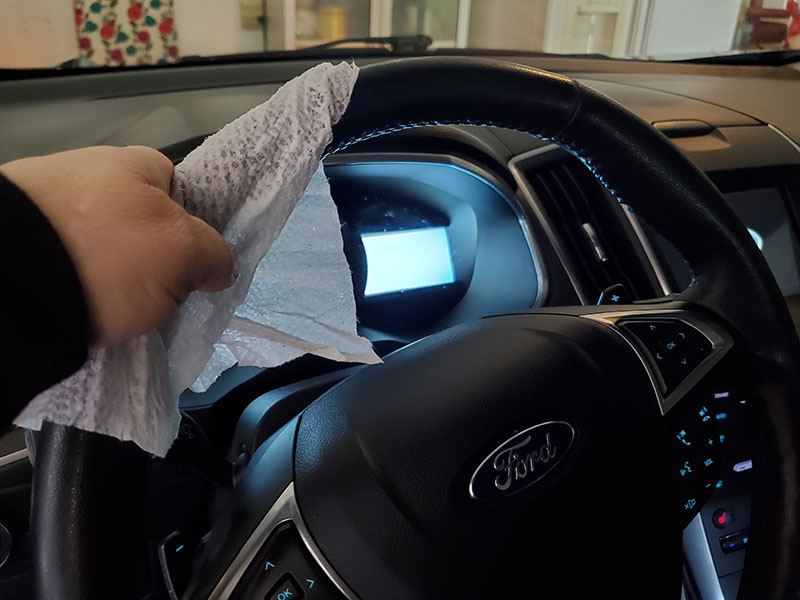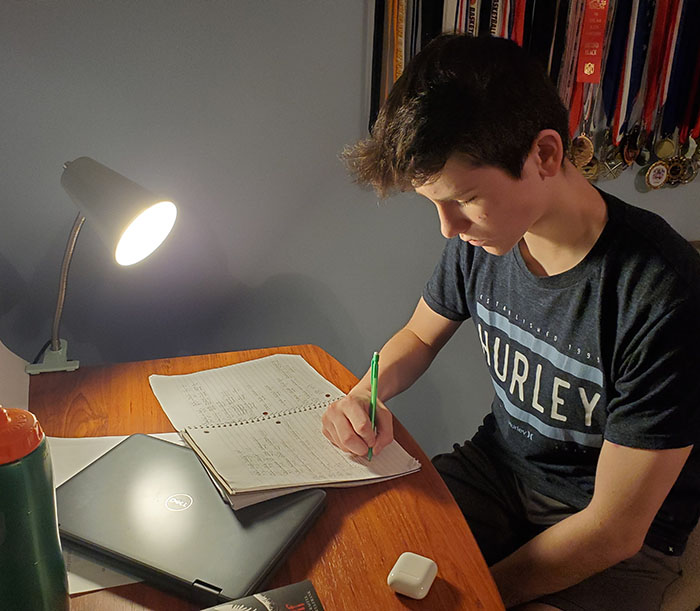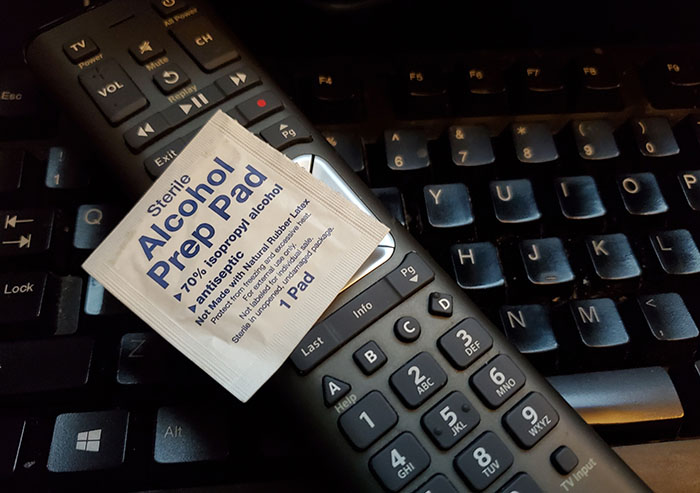
Many of us have found ourselves in a familiar, yet strange place. Home. Strange, because we’re spending nearly all of our time there – for work, for school, all to slow the spread of COVID-19.
Home safety tips
Some may already have a comfortable home office. Others are making do with temporary set-ups. Either way, OPPD’s manager of Safety and Human Performance, Arlo Christensen, has some advice.
“Find a comfortable chair in your home, ideally with lumbar support. You can try rolling up a towel to place behind your lower back.”
He said your feet should be able to rest comfortably on the floor to relieve stress on your thighs and lower back, and your shoulders and arms should rest comfortably at your sides.
“Avoid sitting in a way that makes you bend forward or twist to the side, as this puts mechanical pressure on your spinal discs, ligaments and muscles. A slightly reclined position is ideal.”
With your computer, center the keyboard and mouse in front of you, keeping your wrists flat and straight. If you’re using a laptop, try to attach a separate keyboard and mouse. “That gives you flexibility with your laptop monitor,” he said.
“The top of your monitor or the first line of text should be at or slightly below eye level.”
If you can, use a headset or speaker in place of your phone for extended meetings to avoid neck, shoulder and hand fatigue.

Christensen also said we should not underestimate the importance of good lighting. “Task lighting can help illuminate your documents to reduce eye strain.”
And, be sure and give yourself a break from the computer every now and then. “Follow the 20-20-20 rule,” he said. “Every 20 minutes, focus on an object 20 feet away for 20 seconds.”
Germ avoidance in public
While staying home as much as possible is the directive in order to flatten the COVID-19 infection curve, you’ll need to leave the house for groceries, medications, and other essential goods. How can you protect yourself?
“Minimize the number of trips you make out of the house, and only do so when necessary,” Christensen said. “Try to run all your errands at one time, once a week, and with the minimum number of family members needed. I would suggest having a 14-day supply of all the essentials.”
According to guidelines issued by the Centers for Disease Control & Prevention (CDC), practice social distancing at all times, especially whenever you expect to encounter other people, such as at the grocery store.
When you are at the store, be sure to wipe down any frequently touched areas like handles on shopping carts or baskets. And remember, most stores are not currently allowing reusable grocery bags.
“If you have hand sanitizer, carry it with you,” Christensen said. “Most grocery stores have it placed in several locations. But I would carry my own to reduce touching other areas that are frequently touched.”
In addition, he recommends trying to shop when stores are not as busy. Avoid crowded aisles. And use the self-checkout registers, if possible, to minimize person-to-person contact.
Also try to remember to avoid touching your face with unwashed hands.
Germ avoidance at home
It’s a good idea to wash your hands when you get back home.
“Once all the groceries are put away, I go back with disinfectant and wipe down the frequently touched places like door handles, car door handle and the steering wheel,” Christensen said.
“Wash your hands frequently. I cannot stress that enough,“ he said. “The virus will only replicate inside a living cell.”
The virus can stay active on hard and shiny surfaces, such as glass countertops or plastic, for up to 72 hours, , so remember to disinfect those areas.
“It can also stay active on cardboard, paper and porous surfaces,” Christensen said. “Although it’s less likely that there will be viable amounts of the virus on porous surfaces.”
To play it safe, let any packages or deliveries sit for 24 hours before opening them. Or, wipe them down with a disinfectant wipe, waiting until they’re dry before you touch them.
And don’t forget about your electronics, such as cell phones, tablets, keyboards and remote controls. Follow manufacturers’ guidelines for cleaning and disinfecting those items. If there’s no guidance, the CDC recommends using alcohol-based wipes or sprays.

“Teach your children or other loved ones to take these precautions, as well,” Christensen said. “That way everybody’s doing what they can to stay healthy.”

Jodi Baker contributes stories to The Wire in addition to serving as a media liaison for OPPD. She was a reporter, working for news stations from her hometown of Omaha to San Diego, prior to joining the utility in 2013. Jodi has a bachelor’s degree in Broadcasting from the University of Nebraska-Omaha, with a minor in Criminal Justice. She’s married with two older children and two younger dogs – Shi Tzu mixes. She loves watching her daughter’s track meets, going to concerts with her husband Dave, who used to co-host a local music video program, and traveling whenever possible.
View all posts by Jodi Baker >





